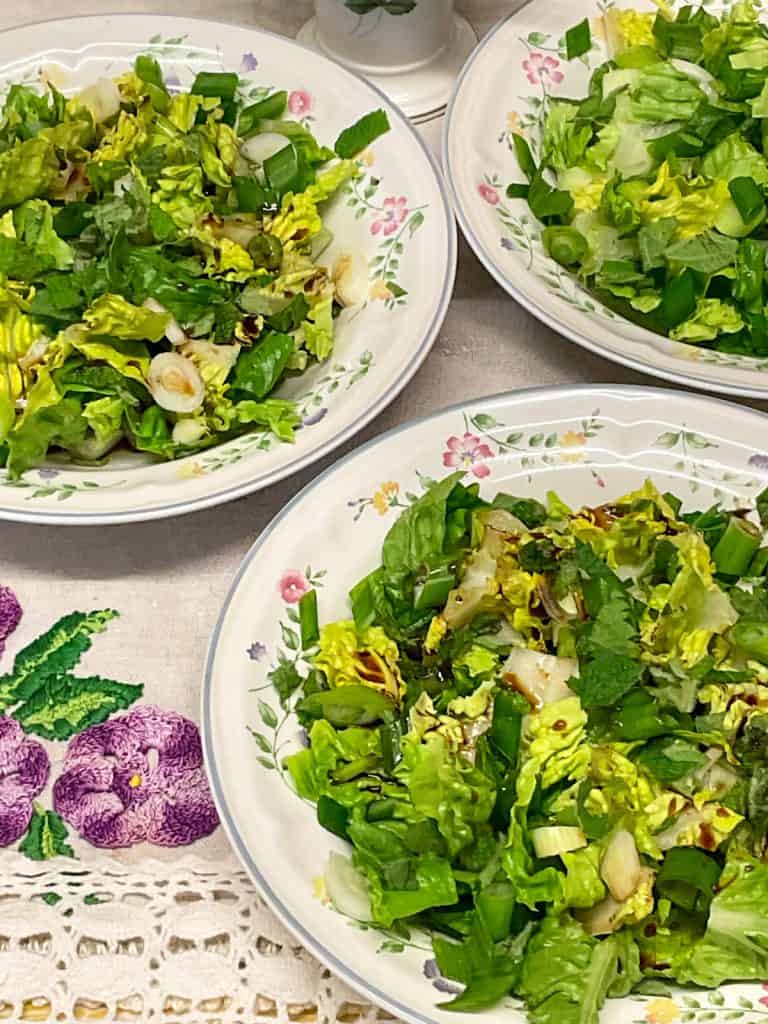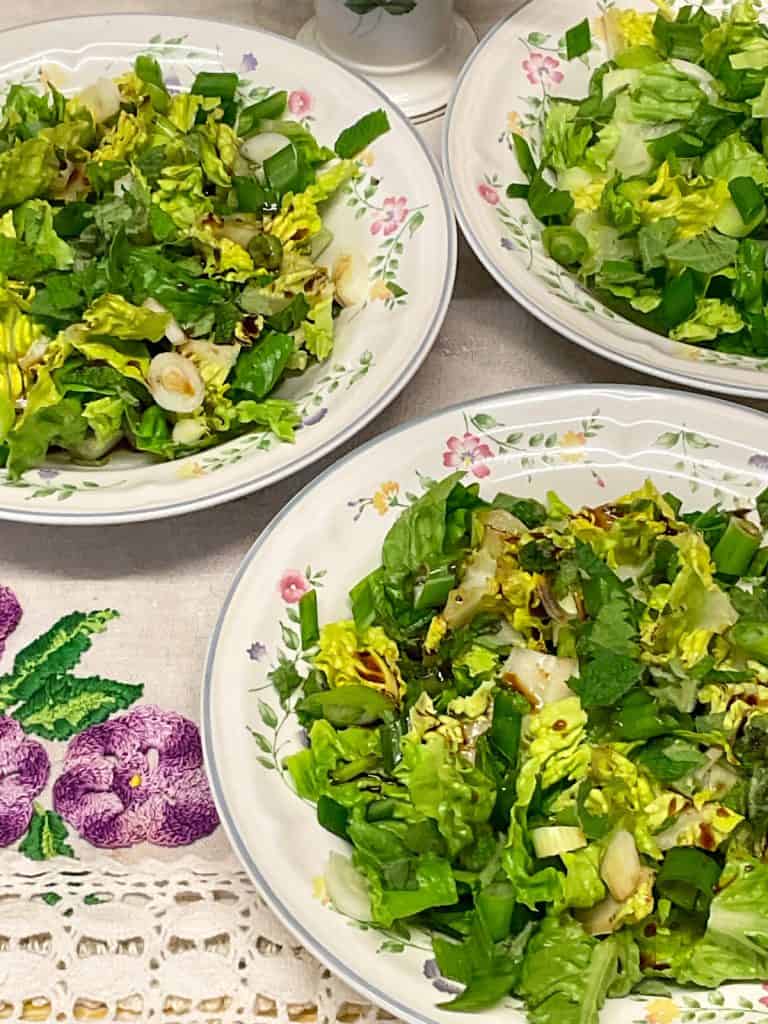This salad recipe from the Victorian Era may have been named A Plain Salad but it is a really tasty worthwhile recipe to have to hand whenever you need to throw together a basic but good salad to accompany dinner or lunch. You only need a few ingredients and once you have prepared the recipe once or twice you can easily put it together without the recipe and of course tweak it to your own preferences.
The recipe for “A Plain Salad” can be found in the Victorian book “A Plain Cookery Book for the Working Classes” by Charles Elmé Francatelli [1852]. It was a salad intended for Victorian working-class individuals, hence its name “plain,” contrasting with the fancier salads enjoyed by the Victorian middle and upper classes.
However, it’s important to note that the Victorian upper classes often prescribed dietary advice to the lower classes, assuming what they should eat, rather than reflecting what they actually consumed.
As Francatelli served as the chief cook to Queen Victoria for two years, his perspective may have been somewhat disconnected from the daily realities and available ingredients of the Victorian working classes.
Francatelli writes in his Introduction:
”My object in writing this little book is to show you how you may prepare and cook your daily food, so as to obtain from it the greatest amount of nourishment at the least possible expense; and thus, by skill and economy, add, at the same time, to your comfort and to your comparatively slender means.”
“A Plain Cookery Book for the Working Classes” by Charles Elmé Francatelli [1852].
As Francatelli’s book is now in the public domain you can read the full book for free over on Gutenberg.org.

Victorian salad recipe
Francatelli’s plain salad recipe is a nice one because it uses simple ingredients, is easily adapted, and tastes very good. My family has enjoyed it several times now, so I’ve added it to our main go-to recipes especially to accompany pasta, rice, and burger meals.
Like many historical recipes, Francatelli’s recipe does not state specific amounts for the ingredients, so I have tailored the recipe to suit my family’s preferences. Of course, you can adjust the quantities by halving or doubling them, or use as much of each ingredient as you prefer.
You can see the original recipe on our blog on the historical Old Salad Recipes page, which is a growing collection of old British salad recipes, many from the Victorian era. These salad recipes are so much fun to prepare, but even if you don’t use the recipe, reading historical recipes is a fun interesting pastime.
For more historical salad recipes do have a look through our Old British Salad Recipe Collection page where you can also find other Victorian salad recipes such as Potato Salad, Onion Salad, and Cabbage Salad.

A Plain Salad [Victorian Era Recipe]
Equipment
- colander
- Chopping board
- chef knife
- serving bowl/s
- beaker or small glass
- cutlery fork
Ingredients
Salad:
- 1 large romaine or Cos lettuce
- 1 bunch mint leaves
- 1 bunch spring onions
Dressing:
- 2 tablespoons balsamic vinegar or your choice of vinegar
- 1-2 tablespoons brown sugar or your choice of sugar
- salt & pepper to taste
Instructions
Prepare salad:
- Shred up the lettuce.1 large romaine or Cos lettuce
- Slice the spring onions.1 bunch spring onions
- Finely chop the mint leaves.1 bunch mint leaves
- Toss all three together in a mixing bowl before adding to serving bowl/s
Prepare dressing:
- Add the vinegar and sugar to a beaker or small glass. Mix well with a cutlery fork and then season with enough salt and pepper to taste. Dip a teaspoon into the dressing and give it a taste and then you can adjust by adding more sugar, salt or pepper.2 tablespoons balsamic vinegar, 1-2 tablespoons brown sugar, salt & pepper to taste
- Note: You can use any type of vinegar or sugar you have on hand to prepare this dressing, just as the working class Victorians would have done.
Serve salad:
- Before serving the salad, drizzle the dressing over.
Notes
- Any lettuce leaf can be used for this salad, although crisp lettuce leaves go particularly well.
- You can switch out the mint for a different herb such as basil, coriander, or parsley, or use a combination of herbs.
- Chives can replace the spring onions.
- You can use any type of vinegar. Working class Victorians may have only had access to plainer white vinegar, so white distilled vinegar can be used if necessary.
- I used light brown sugar, but I have also tried dark brown sugar, which gives the dressing a richer molasses flavour that is quite nice. The original recipe called for moist sugar.
- Alternatively, you can omit the dressing for those who dislike salad dressings.
- Fresh salad is best eaten on the day it is prepared, but it can be stored covered in the refrigerator until the next day.
I would love to know if you prepare this plain but tasty salad recipe. Do leave a comment below. Thanks!


I love this salad recipe, but I would really love to know what you think of it, so please consider leaving a comment below. Thanks! Leigh x